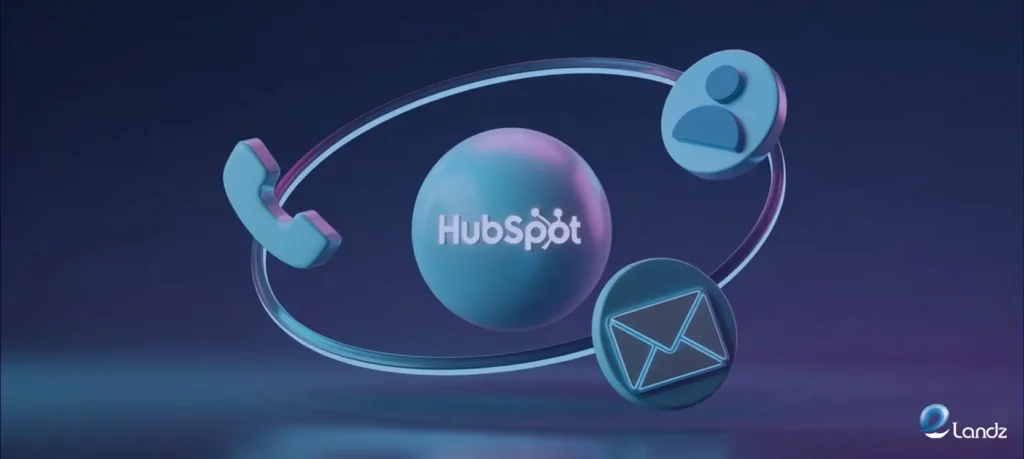
Comparing HubSpot Marketing Contacts vs Non-Marketing Contacts
22 Aug 2025Introduction
The distinction between HubSpot marketing contacts vs non-marketing contacts represents one of the platform’s most powerful features for optimizing marketing spend and improving campaign effectiveness. Many businesses leave significant money on the table by failing to properly leverage this classification system, often paying for higher subscription tiers than necessary while simultaneously diluting their marketing performance with poorly targeted campaigns.
This comprehensive guide will explore everything you need to know about these two contact types, helping you maximize your marketing ROI while maintaining complete control over your subscription costs. By the end of this article, you’ll have the knowledge and strategies needed to transform your contact management approach and unlock new levels of marketing efficiency.
Understanding HubSpot Contacts

Before diving into the specifics of HubSpot marketing contacts vs non-marketing contacts, it’s essential to understand what constitutes a contact in HubSpot. A contact is any individual whose information is stored in your HubSpot CRM database. This includes their name, email address, job title, phone number, lead status, and any custom properties you’ve created to capture relevant business information.
When you create a contact in HubSpot, either manually or through automated processes like form submissions, you must designate them as either a marketing contact or a non-marketing contact. This designation has significant implications for both your marketing capabilities and your billing structure.
What Are Marketing Contacts in HubSpot?
Marketing contacts are individuals you can actively target with HubSpot’s comprehensive suite of marketing tools. These digital marketing resources include marketing emails, social media campaigns, pay-per-click (PPC) advertising, and automated workflows, among other assets. When someone is designated as a marketing contact, they become part of your marketable audience and count toward your monthly contact limit.
There are two primary ways to create marketing contacts:
- Manual Designation: You can manually tag contacts as marketing contacts when creating or editing their profiles in your CRM.
- Automatic Configuration: You can set up automated rules that designate contacts as marketing contacts based on specific actions, such as filling out a form, subscribing to your email list, or downloading a resource from your website.
It’s crucial to understand that once a contact is set as a marketing contact, they count toward your monthly limit regardless of whether you’ve actually sent them any marketing communications. This system ensures businesses maintain control over their marketing spend while providing the flexibility to engage with their audience when needed.
What Are Non-Marketing Contacts?
The phrase “non-marketing contacts” refers to individuals in your HubSpot database with whom you do not intend to send marketing communications. However, contrary to common misconceptions, designating someone as a non-marketing contact doesn’t mean you’ve given up on them or that they’re no longer relevant to your business.
Non-marketing contacts offer several strategic advantages:
They don’t contribute to your monthly marketing contact limit, helping you control subscription costs. You can still communicate with them using sales tools, including one-to-one emails and direct outreach. They remain in your database, preserving valuable historical data and interaction records. Many businesses strategically use non-marketing contact status to ensure prospects receive only personalized sales communications without being overwhelmed by broader marketing campaigns.
HubSpot Marketing Contacts vs Non-Marketing Contacts

Understanding the practical differences between these contact types is essential for effective CRM management and strategic marketing success. The classification system in HubSpot serves as more than just a billing mechanism—it’s a powerful tool for creating targeted, efficient marketing campaigns that resonate with your audience while controlling operational costs.
This fundamental distinction shapes how you interact with your entire database and influences everything from email deliverability to sales team productivity. By mastering the nuances of HubSpot marketing contacts vs non-marketing contacts, businesses can create more personalized customer journeys while maintaining the flexibility to adjust their approach as market conditions and business priorities evolve.
Best Practices for Contact Status Management
Implementing effective contact status management requires a systematic approach that balances marketing objectives with cost considerations. The foundation of successful contact management lies in establishing clear criteria for designating contacts and maintaining consistent processes across your organization.
Developing standardized procedures ensures that all team members understand when and how to change contact statuses, preventing costly mistakes that could impact billing or campaign targeting. Regular training sessions and documented workflows help maintain consistency even as your team grows and evolves.
Cold Contact Import Strategy
When importing contacts gathered through cold outreach or purchased lists, always designate them as non-marketing contacts initially. These individuals haven’t opted into your marketing communications and should receive only personalized sales outreach until they express interest in broader marketing content. This approach protects your sender reputation while ensuring compliance with email marketing regulations.
User Permission Configuration
Establish strict controls over which team members can modify contact statuses to prevent accidental changes that could affect billing or targeting accuracy. Consider implementing approval workflows for bulk status changes, particularly those that could push you into a higher subscription tier. Documentation of all status changes helps maintain accountability and provides insights for future optimization efforts.
Automated Workflow Implementation
Create sophisticated automation rules that adjust contact statuses based on engagement patterns, behavioral triggers, and lifecycle stage progression. These automated systems ensure consistent contact management while reducing manual workload for your marketing team. Regular reviews of automation performance help identify opportunities for refinement and optimization.
Advanced Strategies for Contact Management
Sophisticated contact management goes beyond basic status designation to encompass strategic audience segmentation and dynamic engagement approaches. Advanced strategies leverage HubSpot’s full capabilities to create personalized experiences that drive higher conversion rates and customer satisfaction.
These approaches require a deeper understanding of customer behavior patterns and strategic thinking about how different contact types contribute to overall business objectives. The most successful organizations view contact management as a competitive advantage that enables more precise targeting and resource allocation.
Dynamic Segmentation Excellence
Use the distinction between marketing and non-marketing contacts to create sophisticated audience segments that enable highly targeted campaigns. This approach allows you to speak directly to specific buyer personas and journey stages, increasing relevance and engagement rates. Advanced segmentation strategies consider factors like industry, company size, engagement history, and behavioral patterns to create truly personalized experiences.
Account-Based Marketing Integration
For B2B companies implementing account-based marketing strategies, careful contact status management ensures decision-makers receive coordinated communications while avoiding message overlap. Strategic coordination between marketing and sales teams prevents prospects from receiving conflicting messages that could damage relationships. This integrated approach creates seamless buyer experiences that build trust and accelerate decision-making processes.
Customer Lifecycle Optimization
As contacts progress through your sales funnel, their status should evolve to match their changing needs and receptiveness to different types of communication. Prospects in early awareness stages benefit from educational marketing content, while those in active negotiations may prefer direct sales communication. This dynamic approach ensures each interaction feels relevant and timely, improving overall customer experience.
Maximizing Marketing Contact Effectiveness

Effective utilization of marketing contacts requires strategic thinking about timing, content relevance, and engagement optimization. The goal isn’t simply to market to as many contacts as possible, but to ensure each marketing interaction adds value and moves prospects closer to conversion.
Data-driven approaches to marketing contact management yield the highest returns, using engagement metrics and behavioral insights to inform strategic decisions. The most successful organizations continuously refine their approach based on performance data and changing market conditions.
Re-engagement Strategy Development
B2B sales cycles often extend beyond 12 months, with buyer decision-making processes becoming increasingly non-linear and complex. Contacts who didn’t convert initially may become viable prospects later as their circumstances, priorities, or budgets change. Strategic switching between marketing and non-marketing status allows you to give prospects space during non-receptive periods while re-engaging them when timing improves.
Contact Rotation Implementation
Some buyers prefer comprehensive information during research phases but want minimal contact during internal evaluation and budget approval processes. Implementing sophisticated contact rotation strategies allows you to market actively during receptive periods, shift to sales-only communication during sensitive phases, and ramp up coordinated efforts as deals approach closure. This nuanced approach respects buyer preferences while maintaining consistent relationship building.
ROI Enhancement Through Analytics
Leverage HubSpot’s comprehensive analytics capabilities to identify your most engaged marketing contacts and focus resources on audiences most likely to convert. This approach, guided by data, significantly enhances key performance indicators, including email open rates, click-through rates, and overall conversion rates. Advanced analytics help you understand which types of content and communication frequencies drive the best results for different audience segments.
Measuring Success and ROI
Effective management of HubSpot marketing contacts vs non-marketing contacts directly impacts your bottom line. Companies implementing strategic contact management report significant improvements in email engagement rates, reduced customer acquisition costs, and enhanced sales team efficiency.
Key performance indicators to monitor include email open rates, click-through rates, conversion rates by contact type, cost per lead, and overall marketing qualified lead generation. These metrics help you fine-tune your contact management strategy and demonstrate the value of proper CRM hygiene.
Integration with Sales Processes
The beauty of HubSpot’s contact system lies in its seamless integration with sales processes. Sales teams can continue building relationships with non-marketing contacts through personalized outreach while marketing teams focus their automated efforts on contacts most likely to engage positively.
This division of labor prevents prospects from receiving conflicting messages and ensures each interaction feels relevant and timely. The result is a more cohesive buyer experience that builds trust and accelerates deal closure.
Future-Proofing Your Contact Strategy
A business’s strategy for managing HubSpot’s marketing and non-marketing contacts should be flexible, evolving to meet the changing needs of the company as it grows. Regular strategy reviews ensure your contact management practices align with changing business objectives, market conditions, and customer preferences.
Consider factors like seasonal buying patterns, industry trends, and product launch cycles when planning contact status changes. This proactive approach maximizes marketing effectiveness while maintaining cost control.
Conclusion
Mastering the distinction between HubSpot marketing contacts vs non-marketing contacts is essential for any business serious about maximizing its CRM investment. By strategically managing contact statuses, you can reduce costs, improve data quality, enhance customer relationships, and drive superior marketing ROI.
The key lies in understanding that non-marketing status doesn’t mean abandoning contacts but rather optimizing how you engage with them. Combined with HubSpot’s powerful analytics and automation capabilities, strategic contact management becomes a competitive advantage that drives sustainable business growth.
Whether you’re a small business looking to control costs or an enterprise seeking to optimize complex marketing operations, the principles outlined in this guide provide a roadmap for success. Remember that HubSpot marketing contacts vs non-marketing contacts represents more than a billing consideration; it’s a strategic framework for building better customer relationships and achieving your business objectives.
FAQs
Check out this FAQ section!
How often can you change a contact's status between marketing and non-marketing?
You can change contact statuses as often as needed. However, billing changes take effect in the following month, so frequent changes near billing cycles should be managed carefully to avoid unexpected tier upgrades.
Will non-marketing contacts receive any automated communications?
Non-marketing contacts will not receive communications from marketing tools like automated email workflows, but they can still receive personalized sales emails and direct outreach from your sales team.
What happens to your historical data when you change a contact's status?
All historical data, including previous interactions, email engagement, and behavioral tracking, remains intact regardless of contact status changes. This preserves valuable customer insights for future reference.
Can you set up rules to automatically change contact statuses?
Yes, HubSpot allows you to create workflows that automatically change contact statuses based on criteria such as engagement levels, time since last interaction, or specific behaviors like unsubscribing from emails.
How do you know if you are approaching your marketing contact limit?
HubSpot sends notifications as you approach your tier limits. You can also check your current usage by accessing “Accounts & Billing” from your profile menu in the top right corner of your HubSpot portal.


